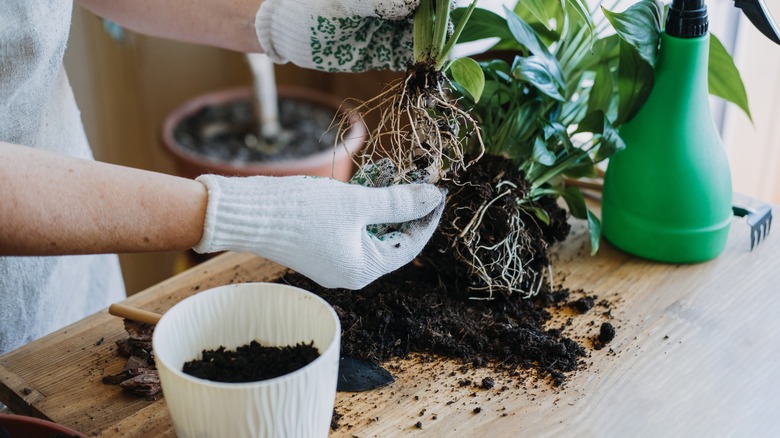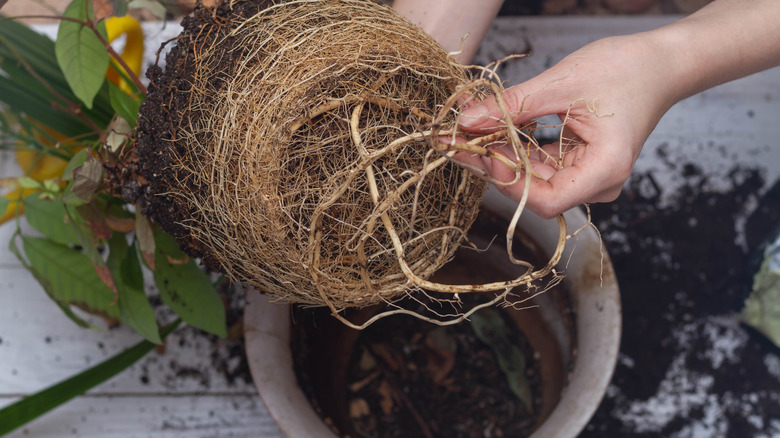Should You Repot Houseplants During The Winter? Here's What House Digest's Master Gardener Says
Sometimes life gets busy, and our houseplants get neglected or — gasp! — even forgotten for a period of time. As the chilly days of winter approach, you may find yourself with some struggling greenery. Above and below the soil line, indoor and outdoor plants do most of their growing in the spring and summer. When winter approaches, you may find your houseplants have become root-bound and need to be moved to a larger container. While it's not the perfect time of year, repotting in the winter is better than letting them suffer through the entire season.
When plants become root-bound, they are less able to absorb water and nutrients. And while some plants don't mind having their roots a little crowded, there are no houseplants that can tolerate having completely compacted roots. Whether your houseplants live indoors year-round or take a summer vacation outdoors, you can repot them even after the days turn cold to ensure they continue to thrive throughout the winter.
Repotting houseplants in the winter
The ideal time to repot a houseplant is in the spring or early summer when it is actively growing. Even indoors, your greenery knows the days are longer and indoor humidity tends to be higher. At that point, the roots take up more nutrients, leading to a flush of top growth. Plants that come inside for the winter may become entirely dormant, while those that spend the entire year indoors may just grow more slowly. It's okay to repot either of these types of houseplants in the winter, just do so with the understanding that you may not see a lot of change in their appearance until the days warm up. Plants that tolerate being grown entirely indoors under artificial light may not be affected at all by winter transplanting.
Select a planter that is just one size up from what you already have. For example, if you are moving a plant from a 4-inch planter, purchase a 6-inch option to keep the roots snug while still giving them room to grow. Remove old soil from the roots, and place your plant in fresh, high-quality potting soil, which will have the nutrients your plant needs to grow. Tamp it down so it is firm but not compact. Water well and keep your freshly repotted houseplant away from heating vents and cold drafts to reduce the impact of transplant shock.

